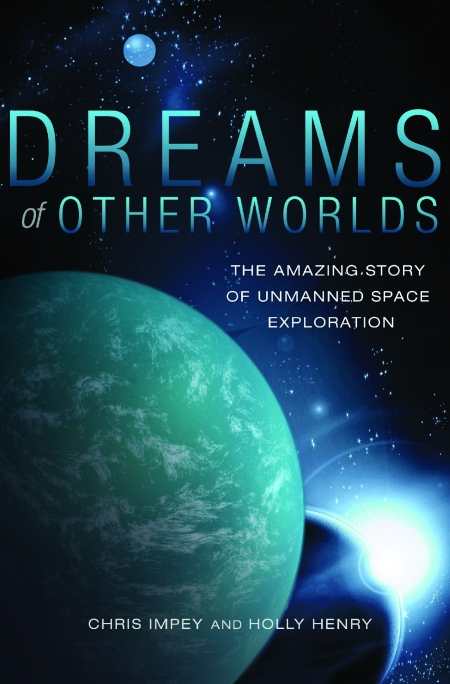Dreams of Other Worlds
The Amazing Story of Unmanned Space Exploration
Packed with absorbing insights and written in an accessible voice, this volume translates scientific discoveries into simple, visual terms.
In Dreams of Other Worlds, scholars Chris Impey and Holly Henry offer a deeply engaging view of unmanned space travel over the past four decades. From the Viking mission launched on July 20, 1976, exploring the possibility of life on Mars, to the Wilkinson Microwave Anisotropy Probe designed to apply a new level of precision in testing the Big Bang theory, this book offers an authoritative and entertaining summary of scientific investigation and discovery.
These accounts of “unmanned” missions are peppered with human drama and colorful insight. For instance, the authors recount how part of the legacy of the Viking mission to Mars, though “inconclusive” in proving the presence of life, was to inspire James Lovelock, a researcher involved in the early phases of the project, to consider the biogeochemical cycles that sustain Earth’s biosphere. His work was part of a “sea change” in thinking about the planet and led to the Gaia theories of Lovelock and Lynn Margulis about the interlocking influences of chemistry, geology, and all forms of life, including bacteria, on sustaining life on the planet.
Similarly, the account of the twin Voyager spacecrafts launched in 1977 is downright gripping. These two tiny vessels, each the weight of a very small car, have beamed back to Earth reams of photographs and data from Jupiter, Saturn, Uranus, and Neptune. As the authors note, “even though long in the tooth and obsolete by modern standards,” these small explorers continue to generate scientific discoveries after thirty-five years.
Transmitting information at a rate 25,000 times slower than broadband Internet service and working on the equivalent of three light bulbs worth of power, the sturdy Voyager crafts have taught us a tremendous amount about those four giant and far-flung planets, their rings and magnetic fields, as well as forty-eight of their moons. And the Voyager mission continues. In the past few years, they’ve taught us that the edges of the Solar System are not smooth and featureless but, in fact, are filled with “chaotic magnetic bubbles one hundred million miles wide” formed by the outer reaches of the Sun’s magnetic fields.
Packed with absorbing insights and written in an accessible voice, this volume features more than sixty illustrations and halftones that effectively translate these scientific discoveries into simple, visual terms.
Impey is an astronomy professor at the University of Arizona, who has written several books on the cosmos, and Henry is an English professor at California State University, who authored a book on Virginia Woolf and the discourse of science and astronomy. Their diverse references—ranging from the caves at Lascaux and Pythagoras to Einstein, Carl Sagan, quantum mechanics, and, yes, even Virginia Woolf—enliven and enrich this engaging and beautifully crafted book.
Reviewed by
Kristen Rabe
Disclosure: This article is not an endorsement, but a review. The publisher of this book provided free copies of the book to have their book reviewed by a professional reviewer. No fee was paid by the publisher for this review. Foreword Reviews only recommends books that we love. Foreword Magazine, Inc. is disclosing this in accordance with the Federal Trade Commission’s 16 CFR, Part 255.

